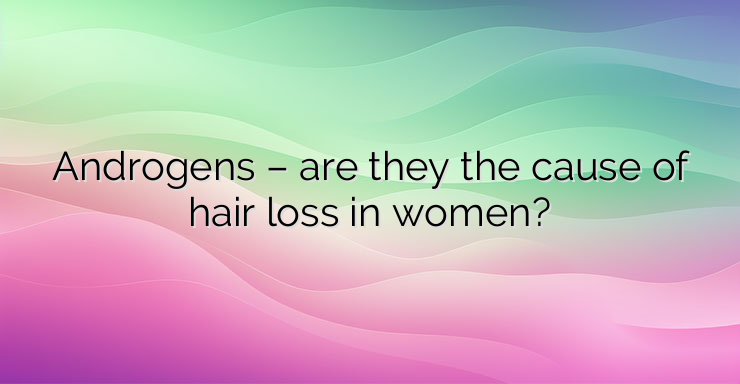It is a well-known fact that hair is one of the symbols of beauty in women, and baldness has a negative impact on a woman’s self-esteem and sense of self. That is why thinning hair, the appearance of bald spots on the scalp and large strands of hair on the brush after brushing usually lead to serious concern and prompt us to look for the causes of the hair loss that has occurred. The reasons for significant hair loss in women can be many and varied, but here we will focus on hyperandrogenemia as a possible factor. Hair consists of two main parts – a hair follicle, which is located in the skin, and a hair shaft, which is its visible part. The hair follicle has a bulb-like shape and is located in the epidermis, reaching the dermis. At its base is the papilla, in which feeding blood vessels are located. The cells surrounding the blood vessels form the living part of the hair – they divide every 24-72 hours, remarkably faster than any other cell in our body. The outer and inner coverings of the hair follicle protect and shape the hair shaft. It is made of the protein keratin and consists of three layers – inner (medulla), middle (cortex) and outer (cuticle). The pigment of the hair is contained in the inner and middle sheaths. There are three phases of hair growth: Anagen – a phase of growth during which the cells of the hair follicle undergo active division. As they move up the hair structures, they undergo differentiation, which ends in quarantine. The duration of this phase is on average 3-8 years. Catagen – a transitional phase during which the division of hair-forming cells is coming to an end. The hair follicle detaches from the feeding papilla and programmed cell death begins. This was followed by its reduction and migration to the surface of the scalp. This phase lasts about 2-3 weeks. Telogen – a phase of rest in which the old hair follicles are already fully prepared to fall out and be replaced by new ones. Each day normally between 25 and 100 telogen hairs are shed from the scalp. This phase lasts from 2-4 months. The putative pathogenetic mechanisms underlying female pattern hair loss are: Transformation of the hair follicle from producing thick and darkly pigmented hair shafts to much smaller vellus hair follicles producing thin and unpigmented hair shafts. Shortening the duration of the anagen phase or staying in the telogen phase for a long time, resulting in a shortening of the anagen/telogen ratio, which is normally 9:1. The hair follicle is an androgen-sensitive structure. Elevated levels of androgens in men can cause significant scalp baldness, turning hard and pigmented hair into vellus hair, consisting of thin and unpigmented hair. The reason for this is considered to bethat it is the increased amount of 5-alpha-reductase (an enzyme converting testosterone into its metabolically active form dihydrotestosterone) and primarily in the frontal area of the capillitium as opposed to the occipital. NEWS_MORE_BOX In women, androgenic alopecia manifests itself as diffuse baldness mainly along the midline (centro-parietal area) and less so in the frontal area. It is believed that in women, the role of androgens in the appearance of hair loss is less prevalent. This is supported by the facts that in a study of women with hair loss – 60-70% of them did not have hyperandrogenemia. This is explained by the lower density of androgen receptors and the lower activity of 5-alpha-reductase in the scalp of women compared to men. Women have up to 80% higher levels of the enzyme aromatase, which converts testosterone into estrogen, in the frontal scalp area compared to men. It is assumed that genetic predisposition plays a greater role in female pattern hair loss. Research in this direction is still ongoing. Different mechanisms for this are being studied – polymorphism in the gene for the androgen receptor of the scalp or the aromatase gene, as well as the role of estrogens as a cause of hair loss in women.


Leave a Reply